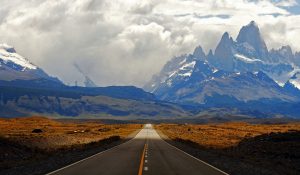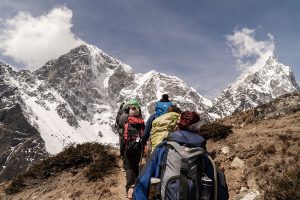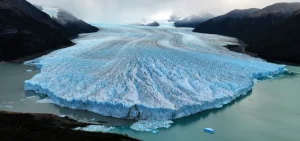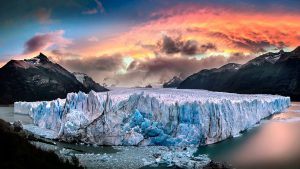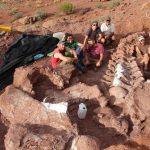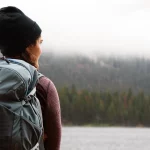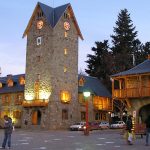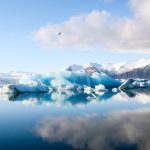We propose you 8 Awesome Things to do in Bariloche, detailing each of the places we recommend visiting
1. Adventure Sports
Bariloche is the perfect destination for winter vacations, when most of the tourists who love skiing arrive, they mainly enjoy Cerro Catedral, a very important destination in the southern hemisphere. There is the Skimax ski school & amp; Snowboard where Ski and Snowboard Classes are offered, group, private, family. For all ages, for all levels: Beginner, Intermediate, Advanced. Freeride and CAMPS classes. SKIMAX is made up of outstanding instructors. It is open from 09:00 to 18:00 hs Suggested duration: 1-2 hours. Address: Plaza Catalina Reynal Base of Cerro Catedral, Local 20

Another option is the one offered by the Ski School & amp; snowboard from Catedral Ski Resort. It offers exclusive or group classes, Ski Baby, Infant School, Youth School, Adapted Ski, Cross Country Ski. You can also find it at the Cerro Catedral Base.
Bariloche is undoubtedly the ideal destination for adventure sports lovers since in addition to skiing, you will find the best slopes in the region for rafting, canopy, windsurfing, diving, kayaking, mountain biking, etc … there are many activities to choose from. , so … Where to practice adventure sports? Between the lakes and the hills there is a great variety of options to enjoy. It is important first decide the destination and then choose between the available activities in each place. Stands out; Cerro Tronador is the highest in the area and at its base is the Ventisquero Negro glacier, Cerro López, ideal for different adventure sports, and Cerro Campanario, which has one of the most impressive views of Bariloche.
2. Nahuel Huapi National Park
The Nahuel Huapi National Park has 710,000 hectares of territory between two provinces, Neuquén and Río Negro, it turns out to be a meeting place for visitors and residents of nearby cities such as San Carlos de Bariloche, Dina Huapi and Villa La Angostura and the existence within the park of two villas: Mascardi and Traful, as well as rural places such as Cuyin Manzano.
Situation due Covid: Currently at this stage within the plan of partial reopening of the Nahuel Huapi National Park, both for the province of Neuquén and for the province of Río Negro, it is reported as the main health indication to visit the protected area, the consultation must be made to 105 before to visit it, in order to plan the trip, and know the status of the different areas of public use and trails of the National Park, which may be open or closed depending on winter conditions and weather alerts issued by the National Meteorological Service.
Activities: The Nahuel Huapi National Park through its various activities and excursions that allows you to enjoy in contact with nature. Both in winter and in summer, you can take walks and sports activities through forests, lakes and mountains, choosing between lake walks, rafting, kayaking, bicycle tours, horseback riding, climbing and mountain trekking. More information https://www.nahuelhuapi.gov.ar/intro_turismo.html

3. Civic and Commercial Center of Bariloche
A prominent activity is to visit the center of the city to enjoy its charm and appreciate the beautiful architecture characteristic of Bariloche. The Bariloche Civic Center is an unmissable point due to its architecture and design, being a group of very prominent buildings in the city, which are located around the square with a view of the uneven lake, there are the library and the museum, in the extreme south the municipality and the post office, and in the west the police and customs.

The project was the work of the architect Ernesto de Estrada, inaugurated on March 17, 1940 and declared a national historical monument in 1987. In its conception, it was sought to create a point of first-rate tourist interest architectural interest. The walls of the buildings are built with green stones that were extracted from the Carbón hill and brick masonry in addition to numerous elements made of cypress and larch wood.

 In the civic center there are some arches that connect it with Miter Street. As you walk through it, you can visit the outstanding shops and taste the specialty of the city: the chocolates always highlighted by the variety and their excellent quality.
In the civic center there are some arches that connect it with Miter Street. As you walk through it, you can visit the outstanding shops and taste the specialty of the city: the chocolates always highlighted by the variety and their excellent quality.
Nearby and as another emblematic building, the Cathedral of San Carlos de Bariloche stands out, “Nuestra Señora del Nahuel Huapi”, it is the main Catholic temple in the city. It is located at the intersection of Almirante O’Connor and Beschtedt streets, it is surrounded by two squares with beautiful gardens that look like something out of a postcard.
For its construction, the architect Alejandro Bustillo offered the project for free and its design has a neo-Gothic style with French reminiscences, it is shaped like a Latin cross with sober shapes, its head is oriented to the East so the sun shines from the beginning of the day. In this way, various variations of the light are also achieved when passing through the stained glass windows. Seen from the outside, planes of light and shadow are generated accentuating the architectural features already mentioned. The material used for its construction was the “white stone”, the roof is made of black slate and has a 69-meter spire-shaped bell tower.
How to get to Bariloche: the city of Bariloche is the most visited tourist destination in Patagonia, it has an international airport that connects it with direct flights from different cities in Argentina and neighboring countries such as Brazil.
4. The Arrayanes Forest
The Arrayanes Forest is located in the southern part of the Quetrihué Peninsula and joins the mainland by a small isthmus, where the beautiful town of Villa Angostura is located. Thus we learned that the Arrayán, origin name of the Mapuche language “quetrihue”, is actually a shrub with an exquisite saffron color and white flowers. In this place they grew to the size of trees to form this magical and unusual forest, with centuries-old specimens of wide trunks. For this reason, it is a forest with unique characteristics in the world, because it is the only habitat where the Arrayanes have an arboreal shape and also grow in a forest formation. The striking bark of this tree is cold, smooth and tan in color with white spots and heights that exceed 15 meters. It has white flowers similar to orange blossom and purple fruits with a pleasant flavor. The forest has an area of 1,000 ha, it was declared a National Park by law in 1980. It is advisable to do some of the excursions, following a path of approximately 600 meters in length and of course, respecting with the utmost care a protected site such as El Los Arrayanes National Park, within the Nahuel Huapi National Park.

Also there is the informally called Walt Disney house, which is actually a small cabin to buy gifts or souvenirs. The guides are always ready to answer questions, providing very valuable information on different topics, such as vegetation, flora and the development of the history of the places to visit, customs and who were its inhabitants, etc.
You may be interested in reading the Travel story: Bariloche is my Dreamed Place
5. Swiss Colony
Colonia Suiza, a beautiful place surrounded by nature and typical constructions inspired by that European country that amaze the tourists who visit it. Without a doubt, Patagonia has been a destination for European emigrants who came to start a new life bringing their customs and traditions, which is reflected in the Swiss Colony.
Towards the end of the 19th century and the beginning of the 20th century, there was an important movement of Swiss, families originating from the Valais canton of Switzerland such as the Goye, Mermoud, Cretton, Felley, Jackard, Fotthoff, Lojda and Neu were the first to settle at the foot from Cerro López.

It is a destination that has places to spend the night and nice restaurants. Among the dishes, a meal called curanto stands out. It is a preparation native to southern Chile and Argentina, where food is cooked in a hole dug in the ground, covered with hot stones and covered with branches. We recommend two places that prepare curanto:
The cheapest option is at the Artisan Fair. They give you a tray with a variety of meats and vegetables to try. A ticket is acquired at the box office while the curanto is being made in sight, a tray is taken at the place where they serve and a place is chosen at the available tables, which are spacious to be shared by more people.
The Restaurant Los Curantos by Víctor Goye, who explains the preparation of curanto and is one of the original inhabitants of the Colony. The dish is enjoyed by “steps” where it is gradually brought in, what is cooked with the possibility at the end, of repeating the dish. Includes dessert and a live folkloric show is presented.
How to get to Colonia Suiza: Colonia Suiza is located 25 kilometers from Bariloche and with bus line 10 it takes about an hour.
6. Small Circuit
One of the unmissable activities to do in Bariloche, mainly in summer, is a beautiful 65-kilometer circular route that can be done by car, by bicycle (there are several rental points along the way) or on a guided tour. The main attractions are Villa Llao Llao, surrounded by lakes, and viewpoints such as Lago Escondido, Puente Arroyo La Angostura and Bahía López dock.

The excursion to Circuito Chico begins on Bustillo Avenue, bordering Lake Nahuel Huapi, heading west. Below we offer you a detailed guide km by km, starting from the center of Bariloche, these are the highlights:
Km. 8: Playa Bonita: It is a beautiful pebble beach located on the shores of Lake Nahuel Huapi. In summer it is usually very popular, but it must be taken into account that the water temperature is still cold for bathing in the lake. Ideal for enjoying the outdoors, doing sports such as kayaking and windsurfing and visiting Huemul Island, which is opposite.
Km. 17: Cerro Campanario: one of the most important hills in Bariloche, 1,000 meters high, it can be climbed by chairlift or by doing a low-difficulty trekking. The 360 view of the Nahuel Huapi and Moreno lakes, the El Trébol lagoon, the San Pedro peninsula, the Llao Llao hotel and Victoria Island stand out. There is also a hostel to eat or drink.
Km. 20: San Pedro Peninsula: you will find the Regattas club and access the San Pedro Peninsula. Here is a viewpoint where you can stop to take photos and enjoy the scenery.
Km. 23: Llao Llao: here you will find an icon of the city, the famous Llao Llao hotel, the San Eduardo chapel and Puerto Pañuelo, from where the boats leave for the Arrayanes forest and Victoria Island and the excursion to Puerto Blest. The Llao Llao hotel is a high category accommodation, built with wood and stone and with a fine decoration inside, located in a privileged place. To access the hotel you have to stay, or simply sit in the cafeteria area and have a drink to enjoy the impressive views.
Km. 25: Llao Llao Municipal Park: from this kilometer the route enters a lush forest where you can stop to enjoy the views and take photos, it has a Tourist Information booth. In addition, you will find here the hiking routes up the Llao Llao hill and the walk to get to the Escondido lake pier and Los Troncos bay.
Km. 33: Arroyo Angostura Bridge. It is a panoramic bridge that connects Bahía López with Lake Perito Moreno. Nearby there are lakeside beaches and picnic area. From here you can get to the Bahía López dock.
Km. 34: El Montañés Cemetery: leaving the car on the side of the route and walking along a one kilometer path, you will arrive at this small cemetery in honor of all the mountaineers who died on their expeditions and journeys.
Km. 35: Arroyo López and detour to Colonia Suiza: here you can take a path along the López stream and enjoy the views of a waterfall in the forest. Also, there is one of the detours to get to Colonia Suiza.
Km. 40: Panoramic point where there are also local craft breweries such as Patagonia and Gilbert, Nahuelito Park, a place to enjoy a drink or meal at the parador along with excellent views.
Km. 42: Lake Perito Moreno Bridge, panoramic bridge that divides the west and east arm of Lake Perito Moreno. Here is another detour to go to Colonia Suiza.
Km 44: Laguna El Trébol, is the sector of the route that borders the small lagoon El Trébol, to later resume the road back to the center of Bariloche.
7. Lake Perito Moreno
The Perito Moreno Lake that we mentioned in the previous point, is the product of the accumulation of water of glacial origin that is divided into two parts: the west and the east. It is the only lake in the area where you can fish with permission, all year round.
As its waters are warmer than the other lakes in the region, it attracts many bathers on good weather days. On its shores are Colonia Suiza and Villa Llao Llao, so you can get to know it when you visit these small towns.
How to get to Lake Moreno: Besides by car, it can also be accessed with the bus service No. 10. In addition, this is one of the points that we mentioned in the Small Circuit.
8. Route of the 7 Lakes
Very close to Bariloche in Villa la Angostura to San Martín de los Andes, we recommend you to travel this beautiful road to discover the different lakes surrounded by nature that is very difficult to describe, you have to see it.
It is called Camino de los Siete Lagos to a section of National Route 40 in the province of Neuquén, specifically the route that connects the towns of San Martín de los Andes and Villa La Angostura in the Province of Neuquén and owes its name to the fact that seven lakes are sighted during its journey.

The lakes that give the path its name, in order from Villa la Angostura to San Martín de los Andes are: Espejo, Correntoso, Lago Escondido, Villarino, Falkner, Machónico and Lácar. The Nahuel Huapi is not part of the “7 lakes” since the route begins after the fork between route 40 and route 231 that goes to the Samore pass. Other lakes can also be visited by taking detours from the main route. They are: Meliquina, Hermoso, Traful and Espejo Chico.
There are a total of 110 kilometers to travel by car, it is recommended to make stops and visit some sectors on foot, in order to appreciate the typical characteristics of the Patagonian Andes region: extensive forests, snowy hills and lakes. This road crosses two national parks: the Lanín and the Nahuel Huapi.
How to get to the Route of the 7 Lakes: this route can be done on your own by car, by bicycle or even hitchhiking, since many people do this route, also hiring a tour making stops at the most important points.


